The fizziness of Kombucha is definitely a delight for many Kombucha drinkers. Not only does it give Kombucha a new texture but also enhances the overall flavor of this healthy drink.
Compared to plain and flat Kombucha, brewing a fizzy Kombucha comes with an extra challenge, particularly for homebrewers. If you are a homebrewer yourself and looking for ways how to make homemade Kombucha fizzy, this complete guide will surely help you out. Keep on reading as we take you through all the necessary information you need to achieve that delightful and fizzy Kombucha we all love.
Table of Contents
How To Make Homemade Kombucha Fizzy
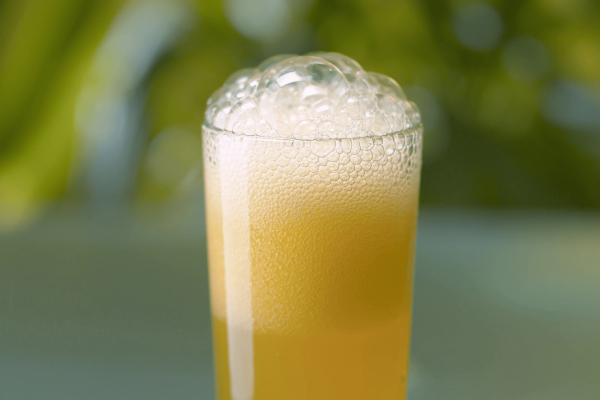
The key to achieving a fizzy Kombucha is a successful second fermentation. Kombucha can undergo one to three fermentation processes depending on the Kombucha variety and the goals of the brewer.
The first or primary fermentation aims to transform sweet tea into Kombucha. It is a crucial part of the Kombucha brewing process that involves using the SCOBY to encourage fermentation. This process can take weeks depending on the desired taste and strength. On the other hand, the second fermentation is done to add flavors and produce carbonation in Kombucha. The third fermentation is always optional and most commonly done for hard Kombucha. Its aim is to give the drink more carbonation and a complex taste.
As we have briefly tackled above, your Kombucha needs to undergo a second fermentation to make it fizzy. But, how does second fermentation make Kombucha fizzy anyway? We’re glad you’ve asked!
"An airtight container is very much necessary in second fermentation to effectively trap CO2"
During this fermentation process, the yeast eats the sugar and converts it into two byproducts namely alcohol and Carbon Dioxide (CO2). Between these two byproducts, the CO2 plays the more important part in making Kombucha fizzy.
CO2 is a type of gas that has very small molecules that freely move and escape the vessel whenever there is a way out. Because the molecules are too small, an airtight container is very much necessary in second fermentation to effectively trap CO2.
Free moving CO2 inside and outside a brewing vessel is not likely to affect the Kombucha however, when it is trapped in an air-tight container and has nowhere to escape, the CO2 will be forced to go to the Kombucha liquid and dissolve in it. When this happens, carbonation develops into the Kombucha. Essentially, the more CO2 dissolves in the liquid, the more carbonation is produced.
Now that you know how second fermentation makes Kombucha fizzy, you are probably wondering what are the essential steps you can do to make your second fermentation successful. Don’t worry because we got you back, below we’ve listed down the three main steps of second fermentation in more detail.
Second Fermentation
Step 1: Transfer your first Kombucha ferment to fermentation bottles
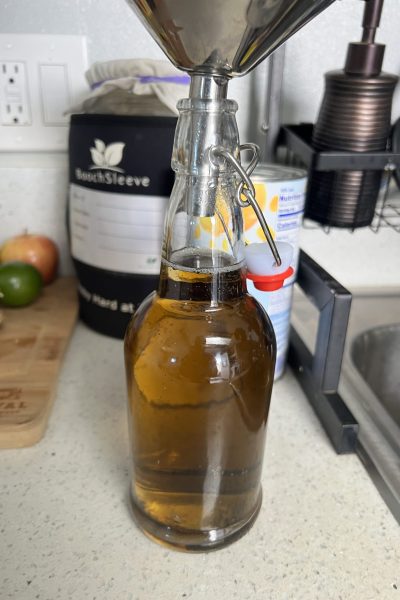
Remove the SCOBY from your first fermentation vessel and keep it in your SCOBY Hotel for a while. Make sure to only place your SCOBYs in the SCOBY hotel or in a clean temporary container.
If you want to remove the floating bits of yeast and SCOBY residue of the Kombucha, you may strain your brew first before bottling. You can strain it by using a cheesecloth or a sieve. Just make sure that all the utensils you use in transferring your Kombucha are clean to prevent contamination.
Next, place a funnel in your fermentation bottles to transfer Kombucha easier and faster. Pour in your Kombucha brew slowly to avoid mess. Additionally, do not fill your bottles with your first Kombucha brew. Always leave some empty space on top of your brew, about a quarter to one-eighth space inside the bottle, for air. The air in the bottle can encourage chemical reactions for more effective carbonation.
If you want to add in some extra ingredients like fruits and fruit juices, you may add them before sealing your Kombucha bottles. You may also add some sugar to boost the formation of carbonation.
Finally, shut your Kombucha bottles tightly making sure that there is no opening for the CO2 to escape.
Step 2: Ferment
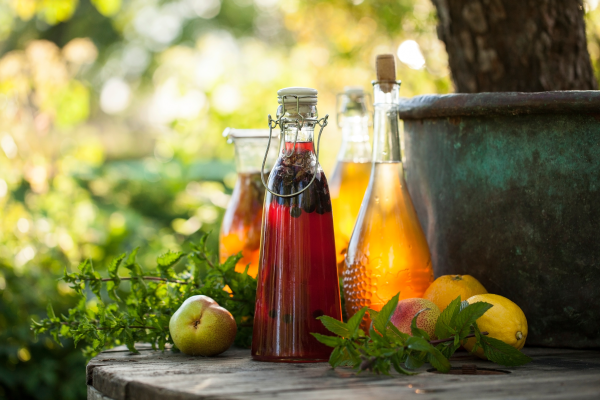
Good things take time and so does Kombucha. Compared to the first fermentation, the second fermentation is relatively short. To encourage your Kombucha to undergo a second fermentation, let it sit for 10 days and more at room temperature.
The room temperature needed for the second fermentation depends on several factors but essentially, Kombucha ferments in temperatures between 65℉ to 85℉. The ideal temperature for Kombucha’s second fermentation should be between mid to high 70℉.
Take note that the cooler the brewing temperature is, the longer it’ll take for your Kombucha to get acidic and effervescent. On the other hand, the warmer it is, the faster it’ll ferment, acidify and carbonate.
You might need to adjust the fermentation time depending on your Kombucha’s brewing development.
In addition, you may see some partial development of SCOBY or floating strands and residue. Although these things may seem weird, don’t worry because they are completely safe to ingest and will not affect your Kombucha’s taste and quality in any way. However, if you are uncomfortable drinking them, you can always strain these residues before drinking.
Step 3: Test your brew

Testing your brew is always an exciting part of homebrewing. To test your second Kombucha ferment, open one bottle and observe if the carbonation has already developed. It should be able to give out that popping refreshing sound we commonly hear when opening a bottle of beer or soda. Next, pour a small amount into a glass and taste your brew. The carbonation should give your mouth a bubbly and tingly feeling similar to drinking other carbonated drinks. Next to the carbonation, you should also check the flavor.
If the flavor and carbonation finally suit your liking, you may place your bottled Kombucha inside the refrigerator. The cold temperature inside the refrigerator slows down the fermentation and preserves the taste of your Kombucha. If you don’t keep your second Kombucha ferment in a cold storage, the flavor and carbonation will continue to ferment over time. You will still be able to drink over fermented Kombucha however the taste might be very strong for you.
You can drink your second Kombucha ferment straight from the bottle. There is no need to strain your second Kombucha ferment. Otherwise, if you are not comfortable with the floating particles inside your bottled Kombucha, you can always remove or filter the fruit and particles before refrigerating.
Your second Kombucha ferment is not likely to spoil when stored inside the refrigerator for months. However, It’s best to consume your Kombucha within one to three months. The cool temperature will only slow down the fermentation and not completely stop it. If you keep your Kombucha for too long inside the refrigerator, it might be too sour for you.
How Long Does It Take For Kombucha To Get Fizzy?
It all depends on the brewing temperature. Under warm brewing temperatures of about 75℉ and above, Kombucha can get fizzy in 1 to 2 days. But, in colder temperatures below 70℉, it can take up to a week and more.
A warm temperature encourages the activity of the bacteria. This results in faster fermentation and production of carbonation. On the other hand, cold temperatures can slow down fermentation and carbonation.
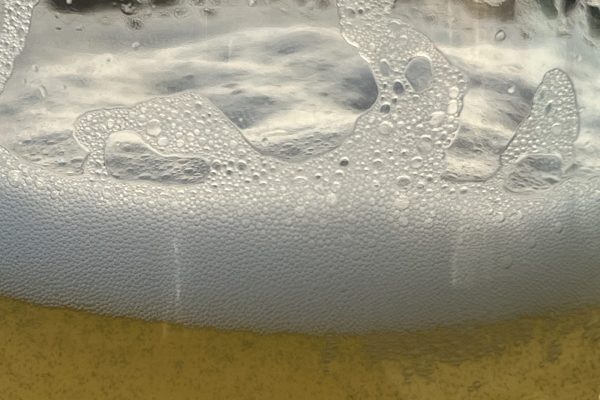
Should Kombucha Be Fizzy After The First Fermentation?
The short answer is NO. After the first fermentation, the Kombucha brew has a flat taste because it is not sealed and no CO2 was dissolved in the liquid.
The only purpose of the first fermentation is to form the Kombucha. It is only covered by layers of cloth to allow oxygen to enter the Kombucha vessel. These layers of cloth are not enough to trap the CO2 and force it to dissolve in the Kombucha liquid. The oxygen in the first fermentation helps maintain the balance of the bacteria and yeast so your Kombucha can ferment accordingly.
What Do I Do If My Kombucha Is Not Fizzy?
Not getting carbonation, even after the second fermentation can be frustrating but it is a common problem among newbie brewers. Don’t panic because there are several things you can do to solve this issue.
Below we’ve listed a couple of things you can do.
1. Check your bottle
You have to make sure that no CO2 can escape your fermentation bottles. When CO2 escapes, then it will not dissolve in the liquid and form carbonation. Hence, it is important to always opt for bottles with airtight caps like a swing-top bottle. This type of bottle keeps your CO2 strictly contained inside the bottle.
2. Extend fermentation time
This is particularly helpful if you are brewing at a relatively cold brewing temperature. The cold temperature may slow down the fermentation of your Kombucha. When this happens, the carbonation is also likely to form more slowly.
3. Add more sugar or flavorings
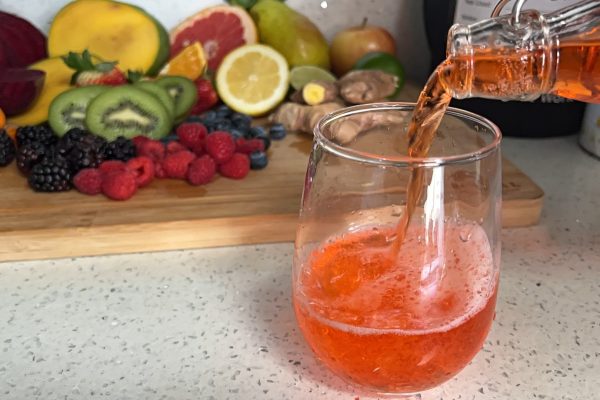
Sugar is an effective ingredient in increasing carbon dioxide production. While there is already sugar in Kombucha, there is a huge chance that most of this sugar content has already been consumed during the first fermentation. You can add about ½ teaspoon of sugar per 16 oz. of Kombucha to boost carbonation. You may also add honey, maple syrup, agave, and other ingredients that contain sugar. Be careful not to put too much sugar to prevent unexpected weight gain due to excessive sugar content.
Adding fresh fruits or fruit juices is another effective way to make your Kombucha fizzy. Fruits contain natural sugars that can boost carbonation production as well as enhance the flavor of Kombucha. However, not all fruits can deliver the same benefits and results may vary depending on the fruit added. Some fruits that can help produce more carbonation are raspberries and strawberries. Adding herbs like ginger can also help in forming carbonation faster.

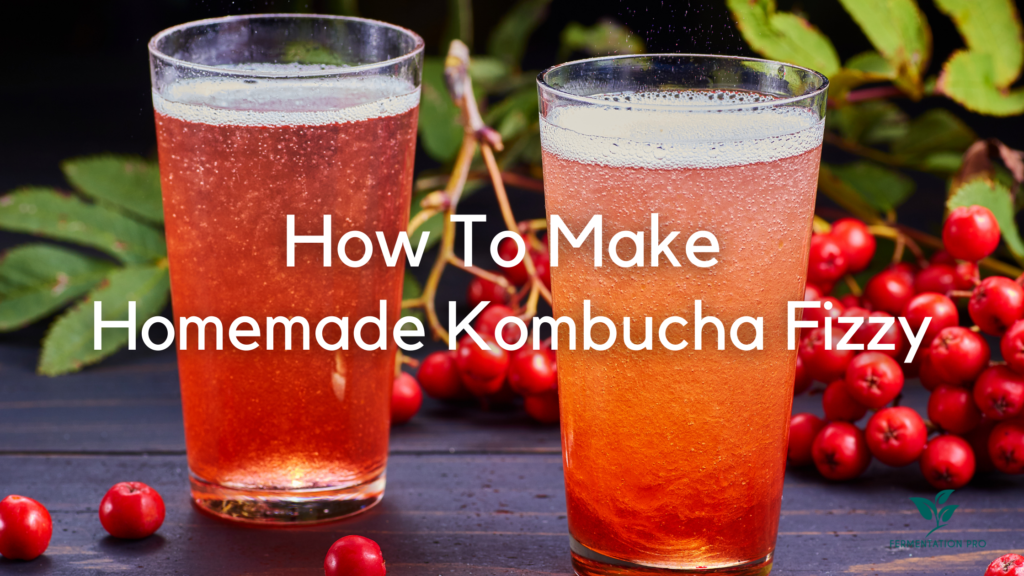


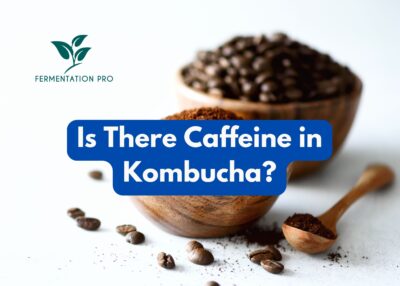




36 Responses
Thanks for your blog, nice to read. Do not stop.
Respected casino https://biamo.bet/ that pays. Prompt payouts, pay any way you want. Many different online games, slots. Huge selection of sports betting, online streaming, work all over the world. Click and win with us
Great online game https://starburst-slotgame.com/ where you can make money, buy yourself a new phone or a car, close the mortgage on your apartment and only one month, quick to register and win.
Great online game https://extrachilli-slot.com/ where you can make money, buy yourself a new phone or a car, close the mortgage on your apartment and only one month, quick to register and win.